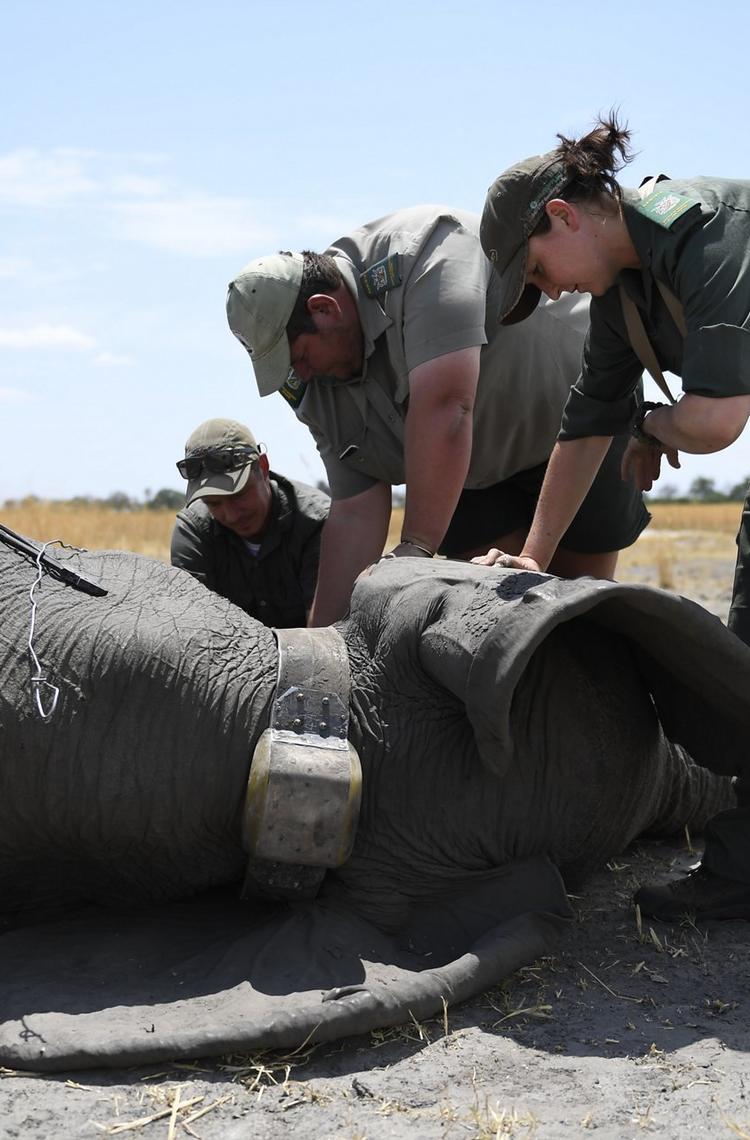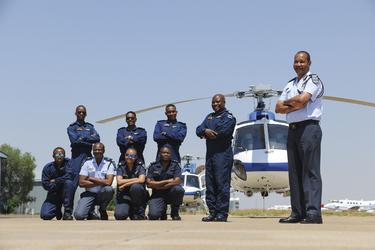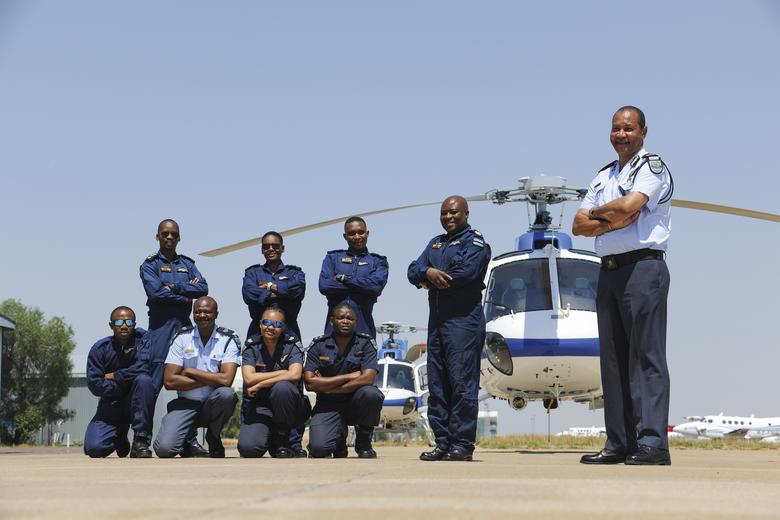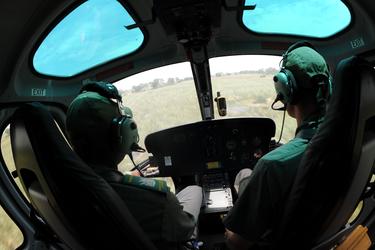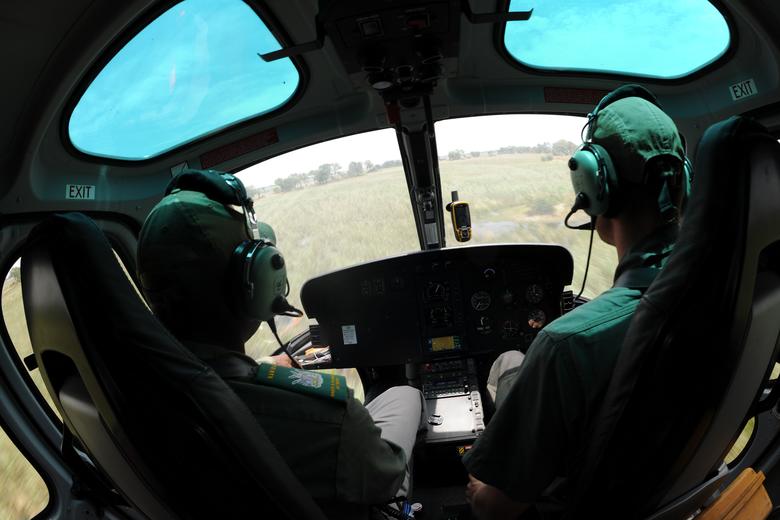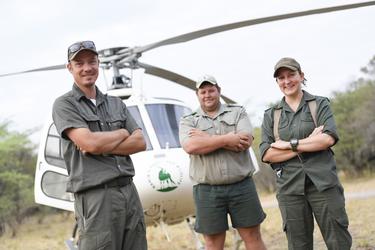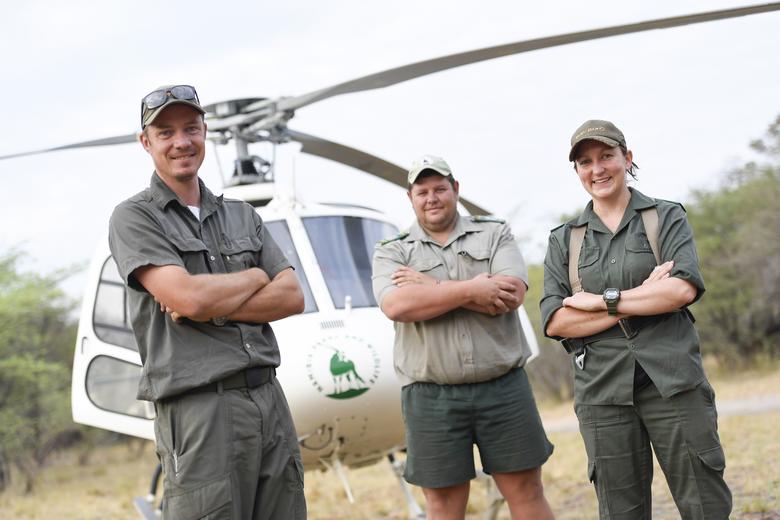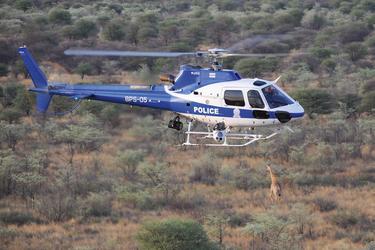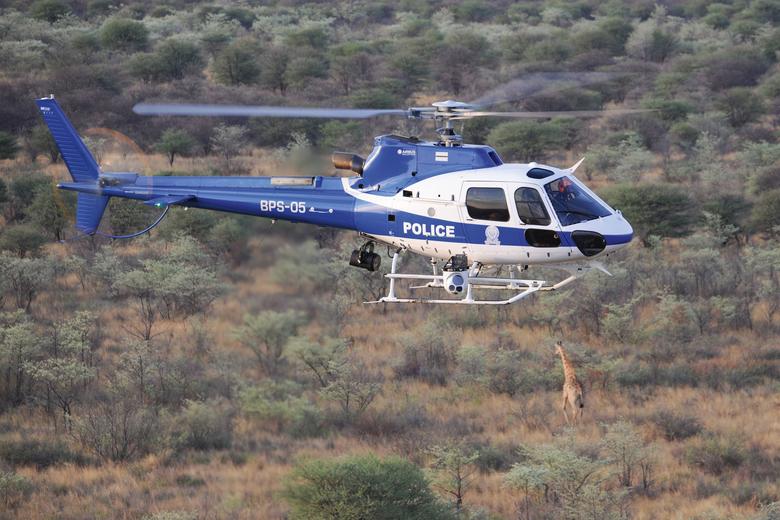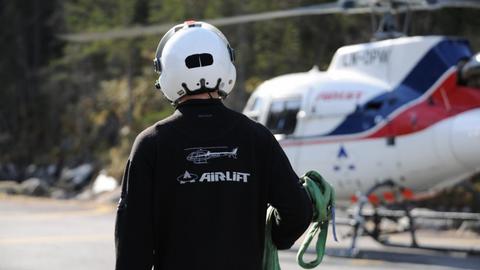Article: Heather Couthaud; Photos: Airbus Helicopters/Anthony Pecchi. Article adapted from Rotor magazine #115.
The statistics are dire. Less than 4,000 tigers are left in the wild. The western black rhino and northern white rhino are now extinct outside of protected reserves (1). These animals, and hundreds of other species, are victims of poaching – killed for their pelts, horns, tusks, shells, etc. – and sold around the world as trophies, medicine, clothing, jewelry, and exotic meat. Poaching is second only to habitat destruction as a threat to the future of the world’s endangered animal populations, according to the World Wildlife Fund. The “bad guys” are poachers, to be sure, aided by sophisticated trafficking networks. But the guilty also include consumers.
Botswana’s police crew in front of their H125.
We often fly areas that we usually don’t see from the ground, and we can see when there is a problem happening in that area. The helicopter helps in alerting our team to that problem.
- Carl-Heinz Moeller, chief pilot for the Namibian Ministry of Environment and Tourism
“One advantage of the aircraft is [that] constant aerial surveillance of the area does deter people from the outside from getting in,” says Moeller, who often overflies Etosha National Park.
Stepping up the effort
Heroic efforts are taking place to combat wildlife crime, from educational campaigns like the one in international airports, to Namibia’s increase in resources earmarked for on-the-ground anti-poaching.
And in-the-air. At least two countries have added the H125 helicopter to their arsenal in the anti-poaching fight. The Botswana Police Service employs one of four H125s for anti-poaching missions, in addition to their regular law enforcement duties. And Namibia’s Ministry of Environment and Tourism employs an H125 to perform game capture, aerial surveys and game counts, and for general park management.
“Our aircraft falls under wildlife support services,” says Carl-Heinz Moeller, chief pilot for the Namibian Ministry of Environment and Tourism. “We often fly areas that we usually don’t see from the ground, and we can see when there is a problem happening in that area. The helicopter helps in alerting our team to that problem.”
The team from the Namibian Ministry of Environment and Tourism poses in front of the H125.
An aerial deterrent
“One advantage of the aircraft is [that] constant aerial surveillance of the area does deter people from the outside from getting in,” says Moeller, who often overflies Etosha National Park. “And it helps the ground staff when they go out, as an aerial support; it gives them a bit of confidence.”
To monitor whether poaching is on the rise, the ministry does game counts. “We fly transects which are worked out beforehand. They will be about 500 metres apart through the whole length of the area that needs to be counted,” says Moeller. “We count everything on either side of the aircraft at a certain height, usually about 150 feet, depending on the terrain.”
One of the four H125s flying over the reserve, east from Botswana’s capital Gaborone.
The H125 is well-suited to the high and hot environment in Africa. “When you talk about the performance of this aircraft in relation to the climate and conditions in Botswana, we are sitting roughly between 3,200 and in some places 5,000 feet, and the temperatures are a little bit high,” says E.S. Morris, Assistant Commissioner with the Botswana Police Service, and chief pilot of the air support branch. “The H125s have performed well in this situation. There is nowhere in the country where I would say the aircraft wouldn’t perform.”
“I wouldn’t want to fly any other machine for these types of missions,” Moeller adds.
(1) Source: World Wildlife Fund-WWF
Namibian Ministry of Environment and Tourism
Base: Eros Airport, Windhoek
Fleet: 1 H125
Activities: Anti-poaching patrols, game capture, aerial surveys and game counts, VIP transport, general park management flights.
Botswana Police Service
Base: Sir Seretse Khama International Airport, Gaborone
Fleet: 4 H125s
Activities: Airborne law enforcement, surveillance missions,
suspect pursuits, anti-poaching missions.
H125
Capacity: 1 pilot and up to 6 passengers
Maximum range: 631 km/341 NM
Fast cruise speed: 251 km/h - 136 kts
Endurance: 4h 28m
Engine: 1 Safran HE Arriel 2D turboshaft engine with FADEC
